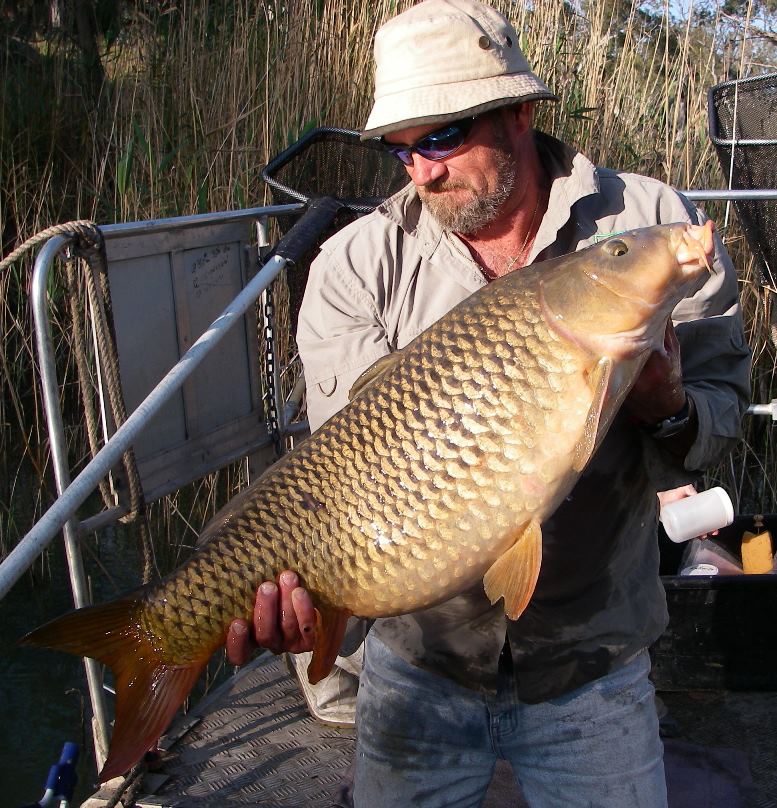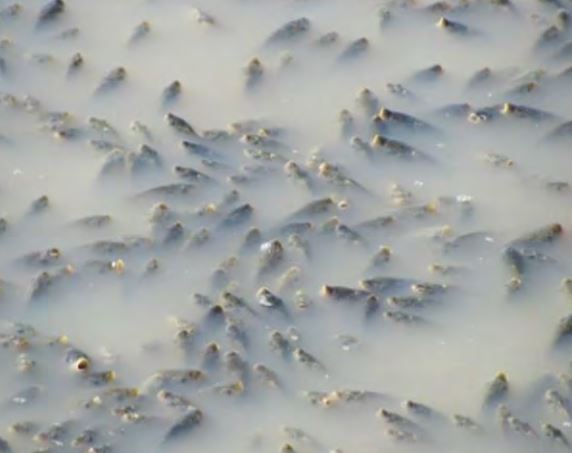Carp are one of the world's most invasive fish species and have invaded almost the entire Murray-Darling Basin over the past 50 years. Carp prefer wetland habitats and will readily spawn in newly inundated areas. Most rivers are now heavily regulated with flow regimes consisting of a combination of natural and managed flows. Environmental watering is a key river rehabilitation measure but there is concern that this may provide opportunities for increased carp recruitment.
To date, most Carp management has focussed on options for removing adult fish, e.g. via a specially designed Carp separation cage. However, as carp breeding and recruitment can be enhanced by flooding, there is clearly a need to also consider this stage of their life cycle in relation to flow management. A population model has been developed and is now being used to quantify how carp populations may respond to a variety of flows, including natural flows, environmental watering and irrigation flows.
This model provides a tool to assist flow and carp management at both a local and Murray-Darling Basin-wide scale. This allows for a comparison of likely outcomes for different management options and assessment of any potential differences to carp populations over natural temporal and spatial scales. The model can also be used to help predict situations which may contribute to an increase in Carp populations. For example, if modelling for a particular location indicated that carp populations may be enhanced during summer irrigation, then targeted carp control could be conducted to mitigate any impacts.


This project was funded by the Murray-Darling Basin Authority.
For more information contact: john.koehn@delwp.vic.gov.au or charles.todd@delwp.vic.gov.au
The models are detailed in the following journal article and ARI technical report:
- Koehn, J.D., Todd, C.R., Zampatti, B.P., Stuart, I.G., Conallin, A., Thwaites, L. and Ye, Q.(2017) Using a population model to inform the management of flows and invasive Carp (Cyprinus carpio). Environmental Management
- Koehn, J., Todd, C., Thwaites, L., Stuart, I., Zampatti, B., Ye, Q., Conallin, A., Dodd, L. and Stamation, K. (2016) Managing flows and carp (PDF, 4.0 MB). Arthur Rylah Institute for Environmental Research Technical Report Series No. 255. Department of Environment, Land, Water and Planning, Heidelberg, Victoria
(accessible version (DOCX, 5.1 MB))
ARI has been involved in other projects regarding the biology and management of Carp:
- Stuart, I. and Conallin, J. (2018) Control of globally invasive Common Carp: An 11-Year commercial trial of the Williams’ Cage. North American Journal of Fisheries Management 38(5): 1160-1169
- Estimating Carp Biomass
Page last updated: 11/11/21